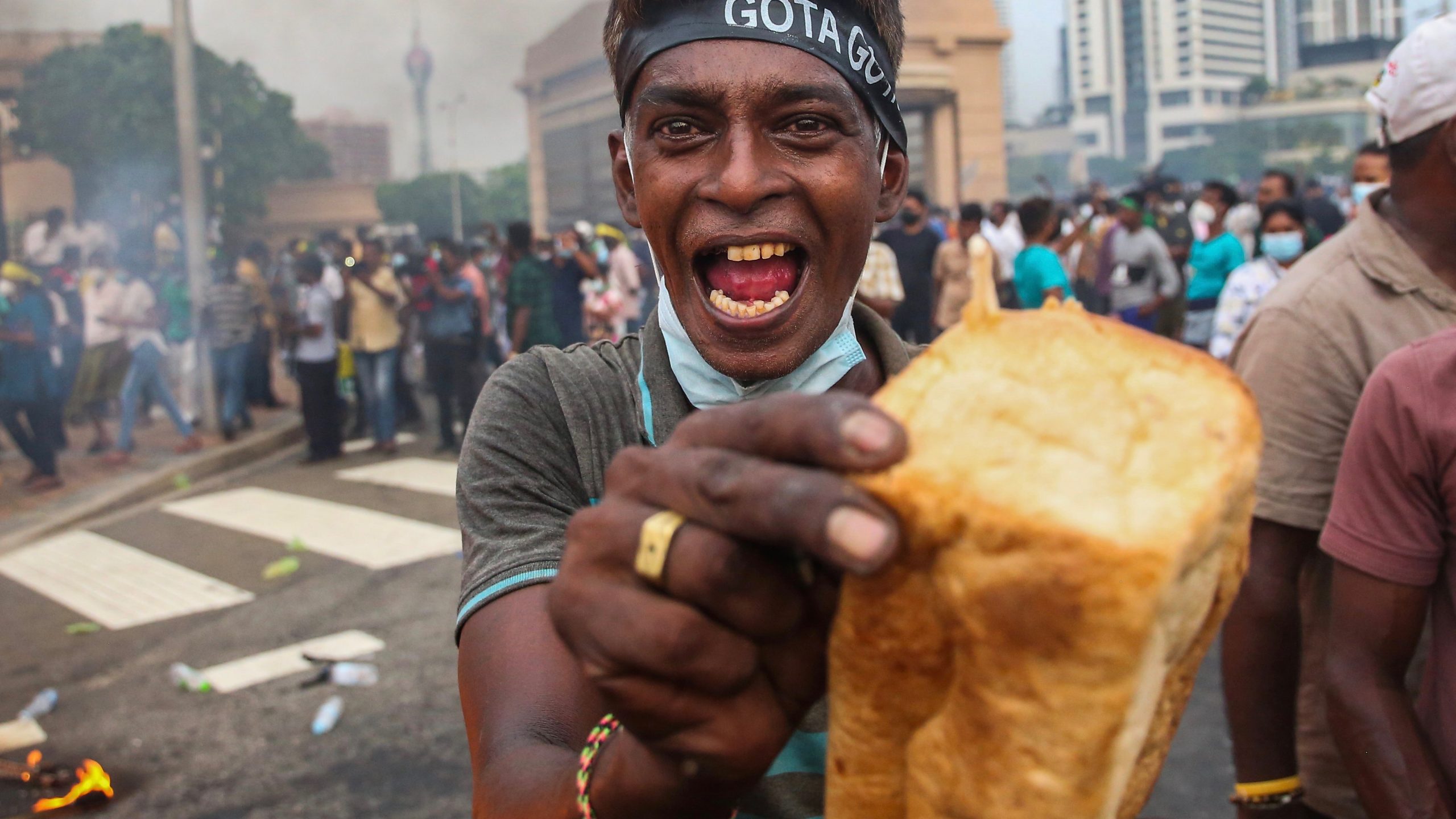On March 22, the Sri Lankan government led by Gotabaya Rajapaksa, deployed military personnel at hundreds of gas stations across the country to organize and manage fuel distribution at a time of acute fuel shortage in the island nation.
As Sri Lanka continues to face a worsening economic meltdown, a sudden rise in prices of essential commodities resulting in their shortage has forced thousands of people to queue for hours outside shops, gas stations to acquire basic supplies from milk to petrol.
The decision to deploy soldiers in the distribution of fuel came after the death of at least four deaths of elderly citizens standing in queues for fuel for several hours. “At least two army personnel will be deployed at every fuel pump,” military spokesman Nilantha Premaratne told Reuters.
On March 15, the Sri Lankan capital Colombo saw massive protests over the accelerating economic meltdown in the country and the Gotabaya Rajapaksa-led government’s mismanagement of the economy.
The protests were organized by the opposition party United People’s Force against the unabated economic crisis. Several thousand citizens joined the protest in front of the presidential secretariat in Colombo.
Sri Lanka's main opposition SJB's protest currently underway in front of President's office in Colombo pic.twitter.com/zX72afcA6n
— Azzam Ameen (@AzzamAmeen) March 15, 2022
Opposition leader Sajith Premdasa addressed the demonstrators at the protest, declaring it to be the beginning of the end for the government led by president Rajapaksa. Presidential elections in Sri Lanka are scheduled to take place in 2024.
The economic crisis in the island nation has gone from bad to worse in a short span of time with widespread shortages of food, fuel and medicine due to a larger forex crisis that has plagued the economy for the past two years.
The protests last week were a culmination of several protests, demonstrations and strikes against the government regularly taking place since last year. The protesters registered their discontent with the government’s policies and inaction as the country continues to undergo its worst economic crisis in several decades.
Powerful images of citizens holding burnt loaves of bread surfaced on social media, indicating the dire condition of the economy and its effects on people’s lives.
I don’t know who Amitha Tennekoon is, but what a picture of the Opposition-led protest in front of the Presidential Secretariat against the government of #SriLanka which is unable to provide people with basics. #lka pic.twitter.com/Wo3ZYWCXLz
— Roel Raymond (@roelraymond) March 15, 2022
Immediate triggers
The citizen’s unrest followed some key developments in the economic sphere the last month, including the devaluation of the national currency by the central bank, double-digit inflation rates, and the government’s decision to finally seek help from the International Monetary Fund (IMF) to restructure its debt which totals at USD 7 billion, of which USD 1 billion is due to be paid in July this year.
On March 8, the Central Bank of Sri Lanka (CBSL) announced that it has devalued the Lankan Rupee (LKR) by 15%. Setting an exchange rate limit of 230 rupees per dollar compared to a tight limit of 200-203 rupees that had prevailed since October, the CBSL’s decision comes at a time when foreign reserves in the country reduced to 2.36 billion at the end of January.
On March 15, finance minister Basil Rajapaksa announced that the government is in talks with the IMF and other aid agencies to find a solution to the lack of sufficient forex reserves.
Earlier, on March 3, following consultations by the Executive Board of the international lending authority, the IMF stated that its directors recommended a gradual return to a market-determined and flexible/floating exchange rate to facilitate external adjustment and rebuild international reserves.
According to a Bloomberg report in February, Sri Lanka has recorded the fastest accelerating inflation rate in Asia at 15.1%, as food and fuel prices continue to rise adding to the hardships of the people.
Economic crisis fast turning into social crisis
The foreign exchange shortage has left Sri Lanka unable to afford essential imports of fuel, medicine and food. The economic crisis has led to a complete meltdown as the country’s stocks of food and fuel are running out, causing alarm across several sectors.
The forex crisis has affected all sectors of the Sri Lankan economy, most importantly fuel. Extreme fuel shortage has led to state-sanctioned daily power cuts for five to seven hours as announced by the Public Utilities Commission (PUC) and the Ceylon Electricity Board (CEB).
— Sajith Bandara (@tmdsbekanayaka) March 24, 2022
Transportation of essential food items like milk and milk powder has also been affected by the fuel shortage, leading to a spillover effect on households and the commercial food industry alike. According to local reports, the price of a cup of milk tea in Sri Lanka shot up to 100 rupees (USD 0.35) after importers raised milk powder prices.
At the base of the economic crisis is the ineffective policy making of the current government.
Shortly after it came to power in 2019 following a landslide victory, the Rajapaksa government announced major tax cuts. This eroded the tax revenue base of the government considerably. For an import-dependent economy relying on its tourism industry, the COVID-19 pandemic further impacted the foreign reserves of Sri Lanka.





